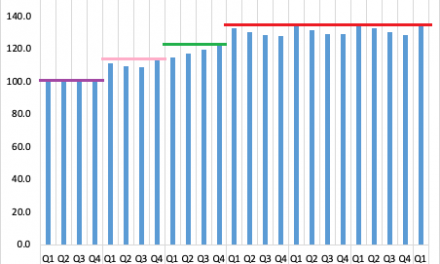
This year is lost for agricultural producers
That we are facing a crisis of major proportions as far as the rainfall season goes, must by now be evident to all those people who make a living off the land. The latest rainfall bulletin from the Meteorological Service shows equally dismal rainfall during February, as was experienced in December and January.
The only two areas where the rainfall in February has caught up somewhat with historic seasonal running totals are Katima Mulilo and Rundu but even there, the season totals are still about 10% below normal. There is also Hochfeld, where inexplicably, the total is also only 10% below normal, while in the surrounding districts, the precipitation deficit runs anything from 25% to 90%, and even to 100% in some places.
Earlier in the week I made a presentation to a Farmers Association, running across sectors and territories, as is usual in this type of analysis. But I was also asked to specifically draw a picture of the impact on the commercial farming community. I stuck my neck out when I said by August this year, producers will be lucky if they get a producer price of N$18.00 per kilo for Grade A beef. Not a single person in the audience, all farmers, disagreed with me. From the end of December last year, meat prices have been following only one gradient, a receding one.
If I am correct and Grade A does eventually go to N$18.00, a very large percentage of commercial farmers face severe financial hardship. That is to say if the cattle they market in August can still attain a Grade A rating. As a comparison, Grade A red meat touched the N$22.00 per kg level last year May, but improved during the year exceeding the N$30.00 level, up to December, when the declining trend started.
Anecdotal evidence brings us stories of emaciated cattle beginning to die in communal areas. Other stories relate to commercial farmers simply not being able obtain the necessary slaughter permits as the abattoirs are overloaded, and finally, I was told by a speculator of truckloads of young animals leaving auctions in the South at a price of N$9.00 per kilo live weight. This is about half the price the same producers still managed to get in December last year. Imagine what the impact on a farming operation’s cash flow must be if its revenue stream is cut in half.
From the communal areas in the north I receive more horror stories. Current conditions are close to what I predicted in January with only a very small or no Mahangu crop expected in most areas. Even in the Kavango and Caprivi regions where early, and then again, late rains have brought some relief, the main part of the growing season was lost, and the Mahangu and maize crop will certainly be far below normal.
Notable at the farmers meeting was the optimism of farmers from the southeast (Kalahari) and the Hardap and Karas regions. For the southern half of the country, the most important rainfall month is typically March. But it must be remembered that this area’s “normal” rainfall is far less than for the northern half. After all, that is the reason why it is generally a dry place and why farming units are so large. I do not want to disappoint the farmers from the south but the dominant weather pattern globally is not conducive to a late come-back for this rain season. Sea surface temperatures across vast swathes of ocean are simply too high to allow for a quick reversal to a more normal pattern. This is most evident quite close to home where the Indian Ocean temperatures now exceed 29oC across some 60% of its surface area. This leads to the forming of tropical cyclones which inevitably, with its clockwise circulation, sucks the moisture away from the western half of southern Africa.
I do not think I exaggerate when I say the entire country, to a lesser or a greater extent, is in the midst of a severe drought. Apart from the immediate effects on agriculture, both commercial and communal, it also has a huge impact on the fresh water reservoirs. In line with my own expectations, the City of Windhoek very recently had to announced the first limited water restrictions but this is set to become more restrictive as the year continues.
Although we live in a country that is classified as arid, over the past decade we have had the good fortune to experience about seven above-normal years, and only one relatively dry year, 2010. Of course these wet conditions brought their own complications as was witnessed by the frequent flooding.
However, a statement made by another presenter at the farmers meeting put current matters in a slightly different context. His observation was that a responsible Namibian farmer always farm with one eye on the possibility of a dry year. And further, this type of farmer will not escape the impact of the drought, but he or she should be able to ride it out.













































